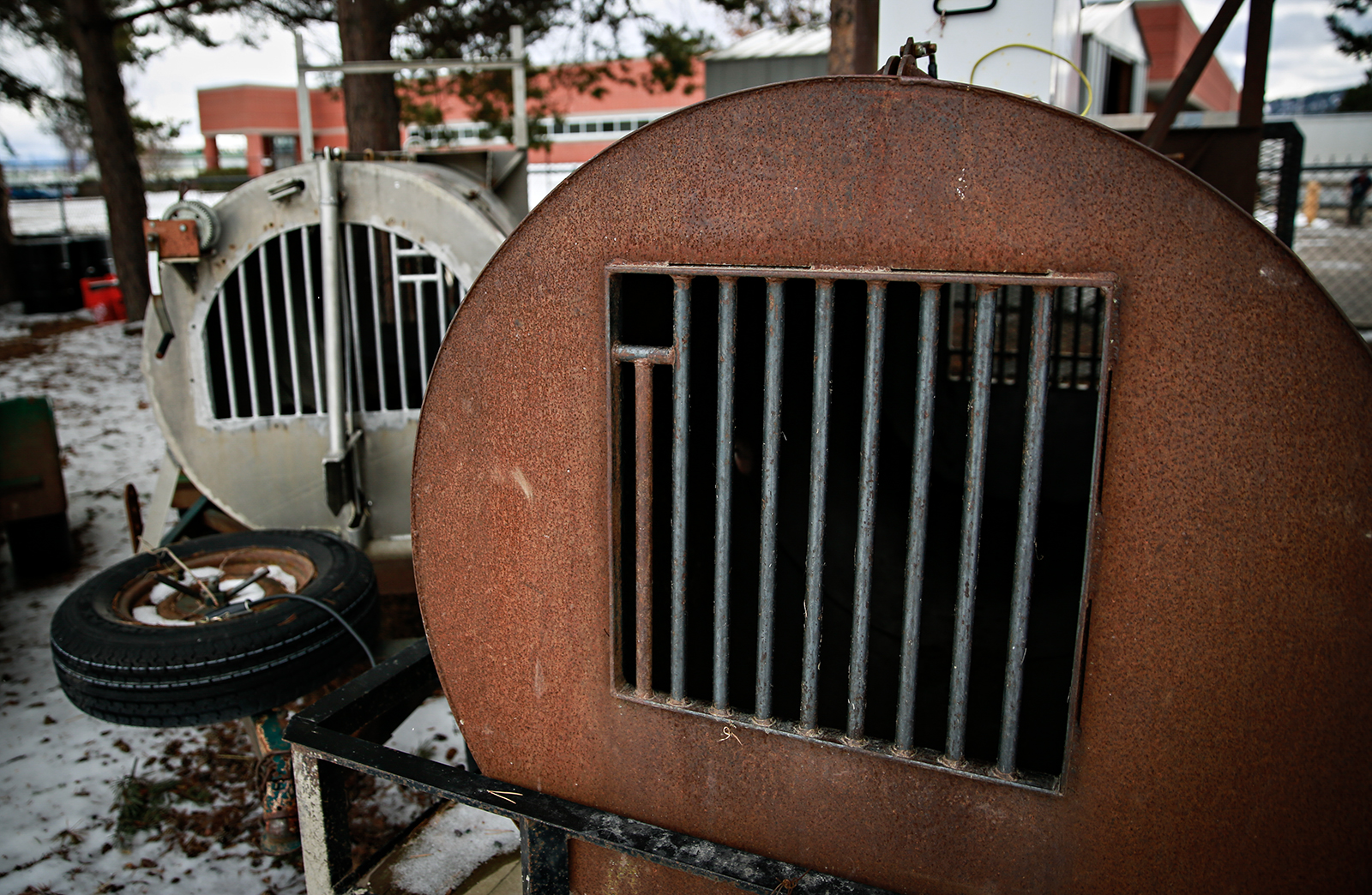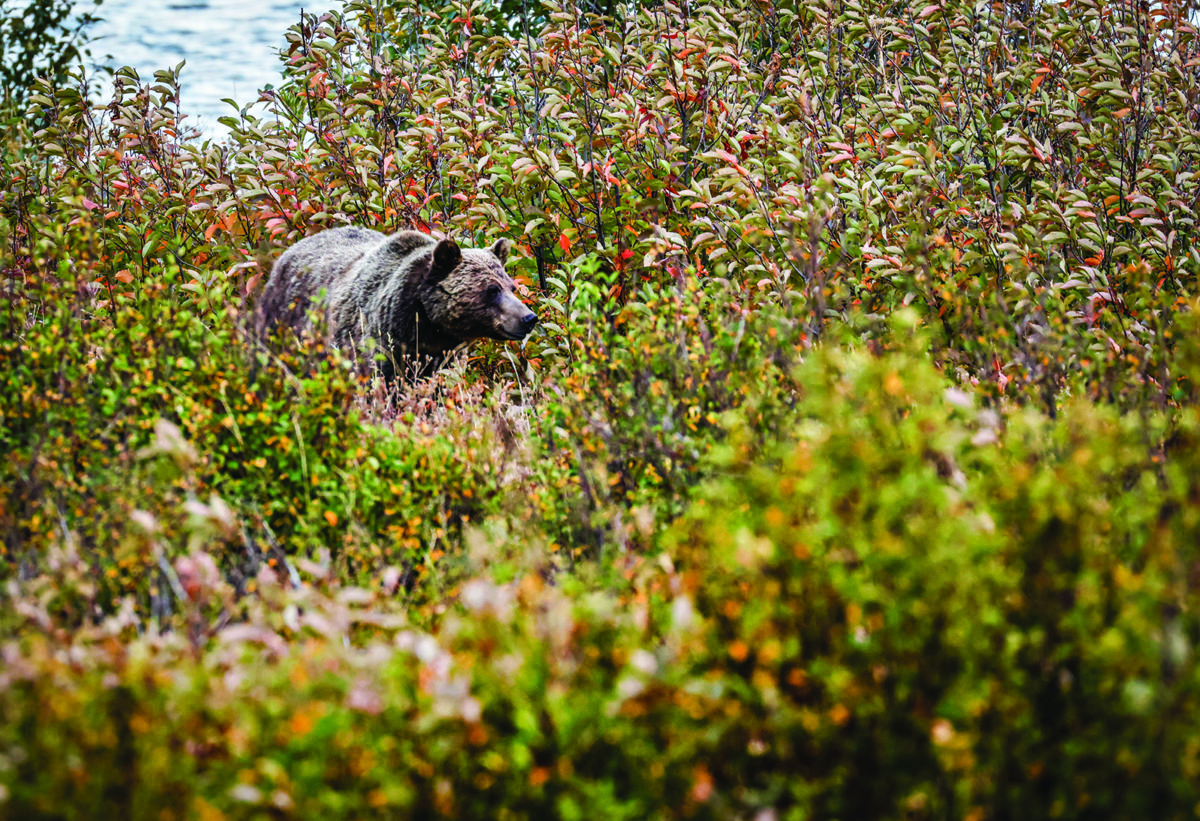Grizzy Bear Deaths, Conflicts Continue to Rise in Northwest Montana
A spate of recent bear encounters underscore the state agency’s new messaging approach when reporting encounters between humans and grizzly bears, including online tools to promote awareness
By Tristan Scott
Since the Montana Department of Fish, Wildlife and Parks shifted its messaging strategy surrounding conflicts between people and grizzly bears earlier this year, state wildlife officials have been heavy on sympathy for landowners and livestock producers who encounter bears, but light on details into the circumstances that in the span of three months contributed to the deaths of 14 grizzlies across the state, including six that were reportedly killed in self-defense.
In an effort to be more transparent, this week the state agency launched an online grizzly bear conflict database as a community resource for landowners who want more insight into how state wildlife managers deal with problem bears.
“Managing grizzly bear conflicts continues to be a priority for our staff and the workload is increasing every year,” Fish, Wildlife and Parks (FWP) Director Christy Clark said in a prepared statement. “This dashboard will help inform the public about just what kinds of conflicts Montanans are dealing with and where they’re happening.”
The new web-based dashboard does not include information about grizzly bear mortalities, however, nor does it publish details about grizzly bear relocations that occur as a result of conflicts. That information is maintained separately, with grizzly bear mortality data cataloged through an online dashboard FWP launched last year, while relocation data is collected on a separate web page. The agency is slated to launch a new relocation dashboard this summer; until then, the relocation information can be found here.
“Public interest in FWP’s grizzly bear management remains high,” according to agency officials, who said the new conflict dashboard aligns with their effort “to meet this interest and to increase public awareness.”
It’s also required by law under House Bill 648, a measure that lawmakers adopted last legislative session. The new statute says FWP must notify the public about the capture and relocation of large predators, including grizzly bears. The new legislation adopted under House Bill 648 also requires the state agency to “provide verbal and written notice to the county commissioners, sheriff’s office and tribal government located within the county or tribal government boundaries where a large predator is relocated.”
The pertinence of the new initiative was tested last month when a Swan Valley landowner shot a recently relocated grizzly bear after it threatened his livestock and charged him on his property near Condon. At the time, the landowner had no way of knowing that state officials had captured the 2-year-old male grizzly weeks earlier for killing sheep on private land near Potomac and released it at a state-approved relocation site in a remote drainage of the Mission Mountains north of Seeley Lake.

Following the incident, FWP Wildlife Administrator Ken McDonald told members of the Montana Fish and Wildlife Commission that the notification requirement and relocation dashboard “will make that information a lot more public facing and available.”
Since grizzly bears are listed as threatened by the U.S. Fish and Wildlife Service (FWS), the federal agency has final authority to approve all relocations and lethal removals, as well as to conduct investigations. But FWP is responsible for responding to conflict calls and determining a bear’s eligibility for relocation, and it is beholden to rules adopted by the Montana Fish and Wildlife Commission, as well as laws enacted by the Montana Legislature. Those statutes include Senate Bill 337, which lawmakers passed in 2021 requiring FWP to have all grizzly bear release sites pre-approved by the Commission. The law also prohibits FWP from relocating a conflict grizzly bear captured outside of a designated recovery zone, even as it recognizes that FWS still has the ultimate authority to relocate conflict bears inside or outside of the recovery zones.
Historically, relocation has been a reliable strategy for maintaining a viable recovery population of grizzly bears while also resolving conflicts. But according to Clark, FWP’s newly appointed director who previously headed the Montana Department of Agriculture and brings a livestock-production perspective to the wildlife management agency she now oversees, multiple factors have prompted FWP to reconsider its philosophy when it comes to grizzly bear management, including its policy of capturing and relocating conflict bears.
“As the grizzly bear species continues to grow and expand, FWP’s long historied relocation efforts become less and less fitting to the circumstance on the ground,” Clark told the Beacon last month. “More than ever, this once routine tool of relocating conflict bears is becoming an ineffective management response.”
FWP has also demonstrated a higher degree of sympathy toward landowners, livestock producers and recreationists who experience conflicts with grizzly bears, including this week in news releases about two separate incidents in northwest Montana.
“Landowner safe after grizzly bear encounter near Kalispell,” according to the headline of a July 16 press release from FWP about a Flathead Valley landowner who shot and killed a grizzly bear last week, reportedly after he caught the bear raiding his chicken coop along Foothill Road, east of Kalispell. The release offered no details about the age or sex of the bear, or whether it had a conflict history, although the mortality dashboard identified the grizzly as a female.
“Mountain biker safely repels bear encounter near Troy,” according to a July 15 release from the agency about a cyclist who on June 26 deterred an approaching bruin on forestland near Troy last month by deploying bear spray. That news release featured a video of the mountain biker’s firsthand account of the incident.
Earlier in the year, the public announcements were even more solicitous toward the people who survived close encounters with grizzly bears, even if the bears didn’t.
“Grizzly bear shot and killed near Choteau. Director Clark calls landowners hours after encounter to offer support,” read the opening lines of a May 22 press release about an adult female grizzly bear that two landowners shot and killed after it charged them while they were picking mushrooms on their property.

“Fortunately, the man was uninjured,” stated an April 14 press release about a man who shot and killed a grizzly bear that he said charged him at close range while he was shed hunting near Dupuyer, an incident that remains under investigation.
Top agency officials described the new messaging approach in plain language in an internal email circulated among FWP officials following the Dupuyer incident, describing “an intentional shift in the department’s messaging goals around conflict grizzlies.”
The email also made it clear that “press releases and media inquiries regarding grizzly bears, specifically conflict bears,” must come from the agency’s headquarters in Helena.
“This is due to an intentional shift in the department’s messaging goals around conflict grizzlies,” according to a version of the email shared with the Beacon. “The latest press release on the Dupuyer Creek incident is a good example of the new approach.”
In a statement to the Beacon last month, Clark confirmed that the agency’s tonal shift is a feature of her leadership appointment aimed at being more considerate of landowners who face challenges coexisting with grizzly bears.
“We want to make sure we recognize the traumatic nature of these events on the people who are involved. Our top concern is human safety and well-being and we want to make sure we’re communicating that,” said Clark, who was appointed director in December. “This year there are more bears and more conflicts and with me being a new director it’s going to sound different.”
Historically, the leading cause of grizzly death is management removals by state wildlife agencies in response to cattle depredations and bears getting into human foods and attractants. This year, however, wildlife officials have reported six grizzly bears as having been killed by people in self-defense, and four as conflict removals (two by FWP and two by the U.S. Department of Agriculture’s Wildlife Services Division).
Chris Servheen, who retired in 2016 after working as the U.S. Fish and Wildlife Service’s grizzly bear recovery coordinator for 35 years, said FWP’s attitude toward self-defense killings is tilting too far in the other direction, and that such a cavalier approach to messaging risks undoing the social tolerance state and federal wildlife managers have worked so hard to rebuild.
“FWP seems to be hardening up on the idea of bears in general,” Servheen said. “They don’t seem view it as a negative consequence that these grizzlies are being killed. The director calling the guys who shot a bear near Choteau and asking them if they’re alright, that is very new. Where did that come from?”
Servheen has also advocated for a more robust investigation into self-defense killings involving people and bears, “not so much to doubt or question the version of events that’s being reported, but to learn about what happened so we can avoid repeating it in the future.”
“Every one of these self-defense killings is a learning opportunity and not publishing the details of what happened is irresponsible,” Servheen said.